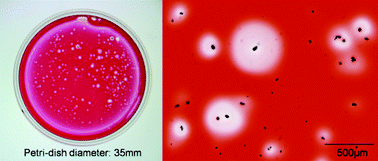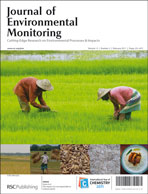Airborne particulates have a major influence on the quality of indoor environments, which in turn affects human health. Both allergens and proteases are major etiological factors in allergic disease. Thus, the monitoring of environmental protease particulates is very important for the management of allergic disease. Protease-monitoring systems have been introduced in industry, but have not been applied to domestic settings, probably because of the high cost and many complex steps involved in these systems. In this study, we developed an indoor protease-monitoring system which can easily detect protease particulates without need for pre-treatment of dust samples or complex measuring instruments such as fluorescent plate reader. As a protease substrate, gelatin thin film (GTF) was adopted to evaluate small amounts of house dust particulates. The principle of this assay is based on the hydrolysis of GTF. Protease molecules spread from a particulate to GTF can hydrolyze the gelatin, thereby producing a spot on the GTF. This hydrolyzed spot visualized by staining was much larger than the particulate size, making visible to naked eye. The GTF method facilitated the observation of a subtle increase in protease particulates fallen on the GTF after the turnover of a used bed-quilt. The newly developed GTF method seems to be a suitable tool for protease monitoring at home.

You have access to this article
 Please wait while we load your content...
Something went wrong. Try again?
Please wait while we load your content...
Something went wrong. Try again?


 Please wait while we load your content...
Please wait while we load your content...